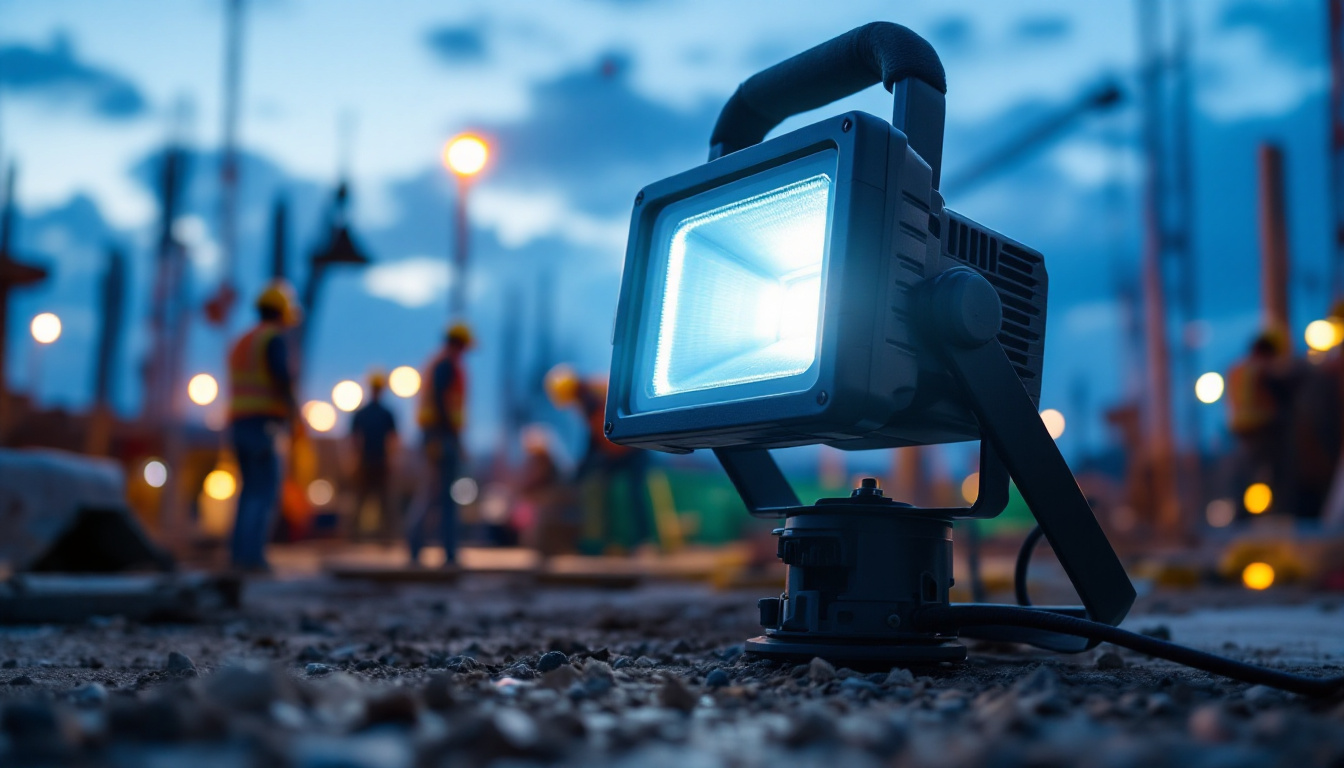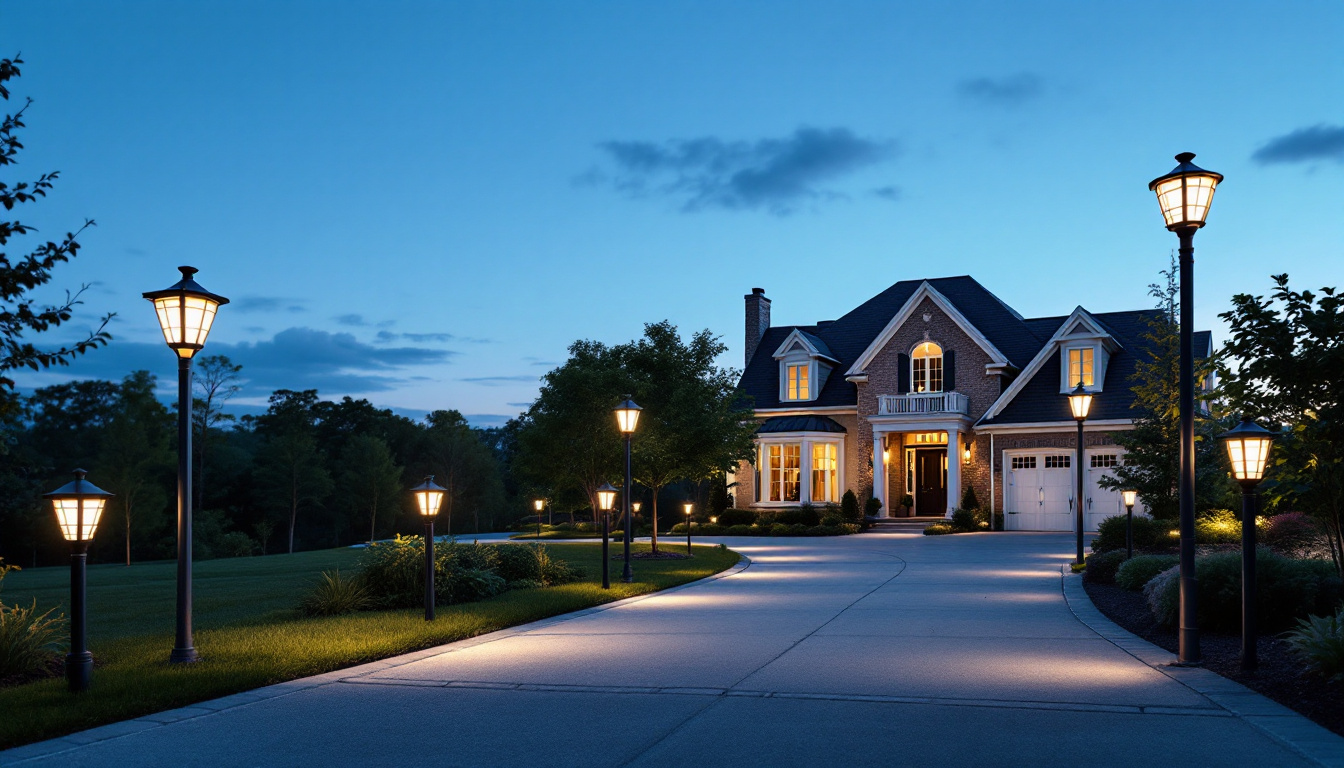
Outdoor area lighting plays a crucial role in enhancing safety, security, and aesthetics in various environments. For lighting contractors, a deep understanding of the science behind outdoor area lights is essential to provide clients with the best solutions tailored to their needs. This article delves into the principles of outdoor lighting, the types of fixtures available, and the factors that influence effective lighting design.
Outdoor lighting is not merely about illuminating a space; it involves a careful consideration of various factors, including light intensity, distribution, and color temperature. Understanding these fundamentals can significantly impact the effectiveness of lighting installations, influencing everything from safety to ambiance. Whether it’s for a residential garden, a commercial parking lot, or a public park, the right outdoor lighting can transform a space, making it more usable and inviting after dark.
Light intensity refers to the brightness of the light emitted by a fixture. It is measured in lumens, which quantify the total amount of visible light produced. For outdoor areas, achieving the right intensity is crucial to ensure visibility without causing glare. Different applications, such as pathways, parking lots, and recreational areas, require varying levels of brightness. For instance, pathways may need softer lighting to create a welcoming atmosphere, while parking lots require brighter lights for safety and security.
Distribution, on the other hand, pertains to how light is spread across a given area. This can be affected by the fixture design, the height at which it is mounted, and the surrounding environment. A well-distributed light can minimize shadows and dark spots, enhancing safety and usability. Techniques such as layering light—using a combination of ambient, task, and accent lighting—can create a balanced and functional outdoor environment. Additionally, strategically placing fixtures to highlight architectural features or landscaping can add depth and interest to the overall design.
Color temperature, measured in Kelvin (K), influences the mood and functionality of outdoor spaces. Warm white light (around 2700K to 3000K) creates a cozy and inviting atmosphere, ideal for residential areas and outdoor dining spaces. In contrast, cooler white light (above 4000K) is often used in commercial settings, as it promotes alertness and visibility. The choice of color temperature can also affect how colors are perceived in the environment, making it essential for designers to consider the surrounding materials and plants when selecting lighting.
Lighting contractors must consider the intended use of the space when selecting color temperatures. The right choice can enhance the overall experience while ensuring that the area is both functional and aesthetically pleasing. For example, a garden illuminated with warm light can evoke a sense of tranquility, while a sports field lit with cooler light can enhance performance and focus. Moreover, advancements in LED technology allow for adjustable color temperatures, giving users the flexibility to change the ambiance according to their needs, whether for a festive gathering or a quiet evening under the stars.
There is a diverse range of outdoor area lights available, each designed for specific applications. Understanding the different types can help contractors recommend the most suitable options for their clients.
Flood lights are versatile fixtures that provide broad illumination over large areas. They are commonly used in parking lots, sports fields, and building exteriors. The adjustable beam angle allows contractors to customize the light spread, making flood lights suitable for various applications.
Modern flood lights often utilize LED technology, which offers energy efficiency and longevity. Contractors should consider the wattage and lumen output to ensure adequate coverage for the intended space. Additionally, many flood lights now come with smart technology options, allowing for remote control and scheduling. This feature can enhance security and energy savings by enabling lights to be turned on or off based on occupancy or time of day, making them an excellent choice for both residential and commercial properties.
Wall packs are mounted on walls and provide focused lighting for specific areas, such as entrances, walkways, and loading docks. These fixtures are designed to withstand outdoor conditions and often feature durable materials to ensure longevity.
When selecting wall packs, contractors should pay attention to the beam angle and light distribution to ensure that the areas are adequately illuminated without creating excessive glare for pedestrians or drivers. Furthermore, wall packs are available in various designs and finishes, allowing them to blend seamlessly with the architectural style of the building while providing functional lighting. Some models also incorporate motion sensors, which can enhance security by activating the lights when movement is detected, thus deterring potential intruders.
Pole lights are tall fixtures mounted on poles, ideal for illuminating parking lots, streets, and parks. They provide a higher mounting height, allowing for extensive coverage of large areas. The height and spacing of pole lights are critical factors in achieving optimal light distribution.
Contractors should also consider the type of lens used in pole lights, as this can significantly affect the light output and distribution. Additionally, the choice of color temperature can influence the overall ambiance of the area being lit. For instance, warmer color temperatures create a welcoming atmosphere, ideal for residential areas, while cooler temperatures are often preferred for commercial spaces, as they enhance visibility and alertness. Moreover, advancements in solar technology have led to the development of solar-powered pole lights, which offer an eco-friendly lighting solution that reduces energy costs and reliance on traditional power sources, making them an attractive option for sustainable projects.
Designing an effective outdoor lighting system involves more than just selecting fixtures. Several factors must be taken into account to ensure that the lighting meets safety, functionality, and aesthetic standards.
The surrounding environment plays a significant role in outdoor lighting design. Factors such as nearby structures, vegetation, and existing light sources can influence how light is distributed and perceived. For instance, trees can obstruct light, creating shadows that may compromise safety.
Contractors should conduct a thorough site analysis to identify potential obstacles and determine the best placement for fixtures. This analysis will help ensure that the lighting system is both effective and visually appealing.
Lighting contractors must be aware of local regulations and standards governing outdoor lighting. These regulations often dictate the maximum allowed brightness, light pollution restrictions, and the types of fixtures that can be used in certain areas.
Compliance with these regulations is essential to avoid penalties and ensure that the lighting system is safe and environmentally friendly. Contractors should stay informed about any changes in local laws that may affect their projects.
Understanding the specific needs and preferences of clients is crucial for successful outdoor lighting projects. Different clients may have varying priorities, such as energy efficiency, aesthetic appeal, or security enhancements.
Engaging with clients during the design process can help contractors tailor solutions that meet their expectations. This collaboration can lead to innovative designs that not only fulfill functional requirements but also enhance the overall experience of outdoor spaces.
The outdoor lighting industry has seen significant technological advancements in recent years, particularly with the rise of LED technology and smart lighting solutions. These innovations have transformed the way outdoor spaces are illuminated.
LEDs have become the preferred choice for outdoor lighting due to their energy efficiency, long lifespan, and low maintenance requirements. Unlike traditional incandescent bulbs, LEDs consume significantly less energy while providing the same or even greater light output.
Furthermore, LEDs are available in various color temperatures and can be easily integrated into different lighting designs. Contractors can leverage these benefits to create sustainable lighting solutions that reduce energy costs for clients.
Smart lighting technology allows for greater control and customization of outdoor lighting systems. Features such as dimming, scheduling, and remote control capabilities enable contractors to design flexible lighting solutions that can adapt to changing needs.
Integrating smart technology can enhance the user experience, allowing clients to adjust lighting levels based on specific activities or times of day. Additionally, smart lighting can contribute to energy savings by ensuring that lights are only on when needed.
Successful outdoor lighting installation requires careful planning and execution. Following best practices can help contractors deliver high-quality results that meet client expectations.
Fixture placement is critical to achieving effective outdoor lighting. Contractors should consider factors such as the height of fixtures, spacing between lights, and the intended use of the area when determining placement.
For example, in parking lots, fixtures should be positioned to minimize shadows and ensure even illumination across the entire space. In residential settings, lighting should highlight architectural features while providing sufficient visibility for safety.
Outdoor lighting systems require regular maintenance to ensure optimal performance. Contractors should advise clients on maintenance schedules, including cleaning fixtures, replacing bulbs, and checking for any damage.
Implementing a proactive maintenance plan can extend the lifespan of lighting systems and prevent costly repairs down the line. This approach not only enhances the functionality of the lighting but also improves the overall aesthetic of the outdoor space.
Understanding the science behind outdoor area lighting is essential for lighting contractors aiming to provide effective and aesthetically pleasing solutions. By considering factors such as light intensity, distribution, and the types of fixtures available, contractors can design systems that meet the specific needs of their clients.
Moreover, staying informed about technological advancements and best practices in outdoor lighting installation can further enhance the quality of service provided. As outdoor lighting continues to evolve, contractors who embrace these principles will be well-equipped to tackle the challenges of modern lighting design.
Ready to elevate your lighting projects with the highest quality fixtures at the most competitive prices? Look no further than LumenWholesale. Our extensive selection of spec-grade lighting products is designed to meet the diverse needs of lighting contractors, ensuring every outdoor area is brilliantly lit with reliability and style. Say goodbye to local distributor markups and hello to unbeatable wholesale value. Plus, with free shipping on bulk orders, you can trust that you’re getting premium lighting solutions at the best price, without any hidden fees. Don’t compromise on quality or affordability. Visit LumenWholesale today and discover the perfect blend of quality, affordability, and convenience for all your lighting needs.

Discover the essential checklist for lighting contractors when choosing portable flood lights.

Discover everything outdoor lighting contractors need to know about linkable outdoor lights.

Discover how under cabinet tape lights can revolutionize your lighting projects by saving time and reducing costs.

Discover how solar light posts are revolutionizing driveway projects for lighting contractors.